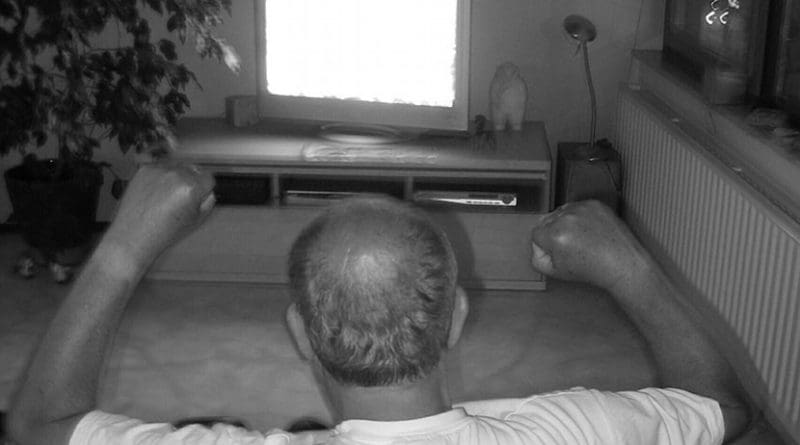Risks For Blood Clot In A Vein May Rise With Increased TV Viewing
Risk of blood clots increases with the amount of time spent watching television, even if people get the recommended amount of physical activity, according to preliminary research presented at the American Heart Association’s Scientific Sessions 2017, a premier global exchange of the latest advances in cardiovascular science for researchers and clinicians.
“Watching TV itself isn’t likely bad, but we tend to snack and sit still for prolonged periods while watching,” said Mary Cushman, M.D., M.Sc., co-author of the study and professor of medicine at the Larner College of Medicine at the University of Vermont in Burlington.
Prolonged TV viewing has already been associated with heart disease involving blocked arteries, but this is the first study in a western population to look at blood clots in veins of the legs, arms, pelvis and lungs known as venous thromboembolism or VTE.
Among 15,158 middle-aged (45-64 years) participants in the Atherosclerosis Risk in Communities Study, researchers found that the risk of developing a venous thromboembolism for the first time was:
- 1.7 times higher in those who reported they watch TV “very often” compared with those who watch TV “never or seldom”;
- 1.8 times higher in participants who met recommended guidelines for physical activity and reported watching TV “very often”, compared with those who reported watching TV “never or seldom”;
- Increased with more TV viewing both for life-threatening clots in the extremities and those in the lungs; and while obesity was more common in people who watched more TV, in the study only about 25 percent of the increased risk could be explained by the presence of obesity.
“Think about how you can make the best use of your time to live a fuller and healthier life. You could put a treadmill or stationary bike in front of your TV and move while watching. Or you can delay watching TV by 30 minutes while you take a walk. If you must see your favorite show, tape it while you are out walking so you can watch it later, skipping the ads,” said Cushman, who is also the director of the Thrombosis and Hemostasis Program at the University of Vermont Medical Center.
Each year, it is estimated that between 300,000 to 600,000 people in the U.S. develop venous thromboembolism, making it the most common vascular diagnosis after a heart attack or stroke. Although venous thromboembolism is more common in people 60 and older, it can occur at any age.
Besides avoiding prolonged TV watching, you can lower your risk of venous thromboembolism by maintaining a healthy weight and staying physically active.
“Health professionals should take the time to ask patients about their fitness and sedentary time, such as prolonged sitting watching TV or at a computer,” Cushman said. “If you are at heightened risk of venous thromboembolism due to a recent operation, pregnancy or recent delivery, cancer or a previous clot, your doctor may prescribe blood-thinning medication or advise you to wear compression stockings.”

